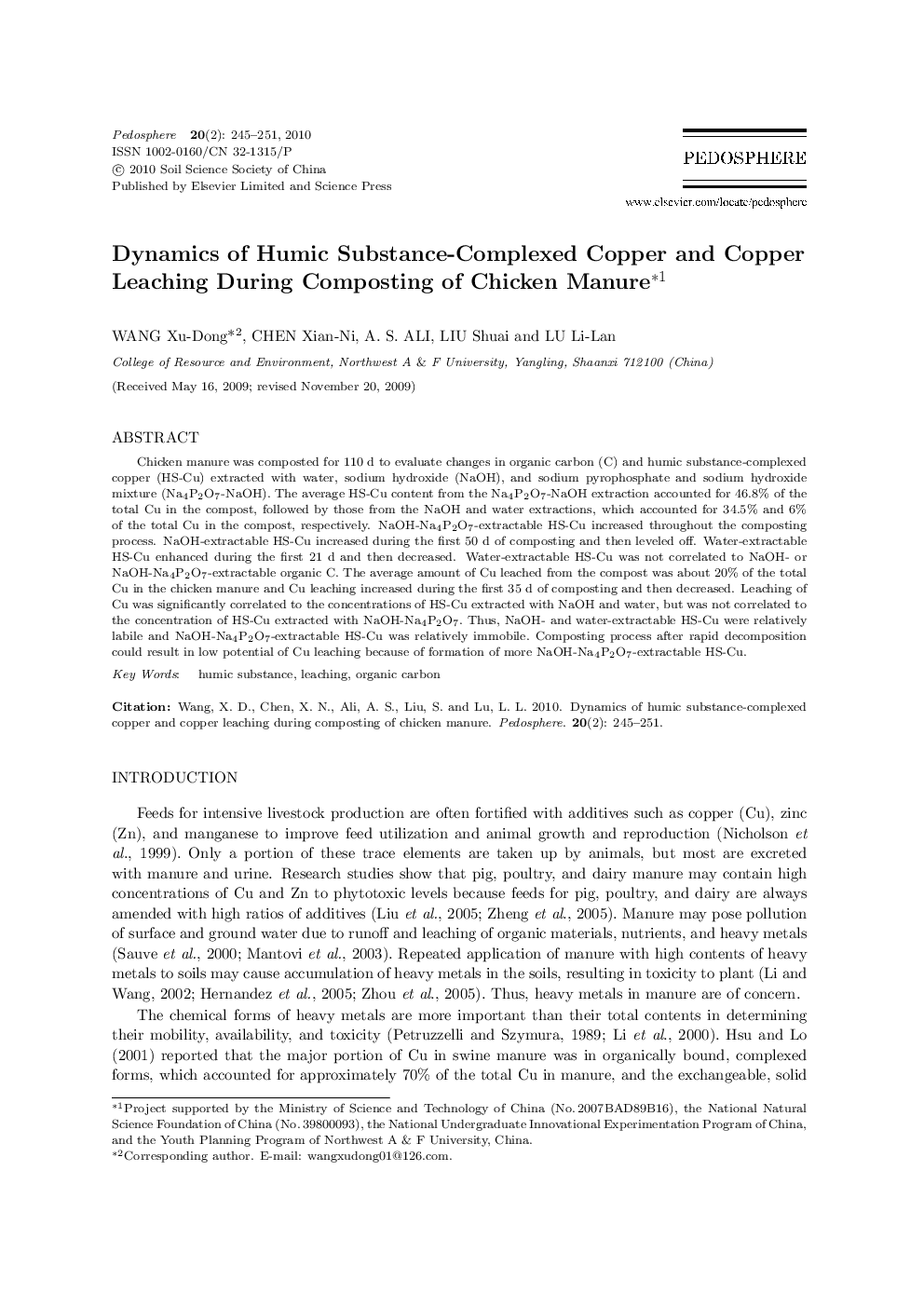| Article ID | Journal | Published Year | Pages | File Type |
|---|---|---|---|---|
| 4581717 | Pedosphere | 2010 | 7 Pages |
Chicken manure was composted for 110 d to evaluate changes in organic carbon (C) and humic substance-complexed copper (HS-Cu) extracted with water, sodium hydroxide (NaOH), and sodium pyrophosphate and sodium hydroxide mixture (Na4P2O7-NaOH). The average HS-Cu content from the Na4P2O7-NaOH extraction accounted for 46.8% of the total Cu in the compost, followed by those from the NaOH and water extractions, which accounted for 34.5% and 6% of the total Cu in the compost, respectively. NaOH-Na4P2O7-extractable HS-Cu increased throughout the composting process. NaOH-extractable HS-Cu increased during the first 50 d of composting and then leveled off. Water-extractable HS-Cu enhanced during the first 21 d and then decreased. Water-extractable HS-Cu was not correlated to NaOH- or NaOH-Na4P2O7-extractable organic C. The average amount of Cu leached from the compost was about 20% of the total Cu in the chicken manure and Cu leaching increased during the first 35 d of composting and then decreased. Leaching of Cu was significantly correlated to the concentrations of HS-Cu extracted with NaOH and water, but was not correlated to the concentration of HS-Cu extracted with NaOH-Na4P2O7. Thus, NaOH- and water-extractable HS-Cu were relatively labile and NaOH-Na4P2O7-extractable HS-Cu was relatively immobile. Composting process after rapid decomposition could result in low potential of Cu leaching because of formation of more NaOH-Na4P2O7-extractable HS-Cu.
